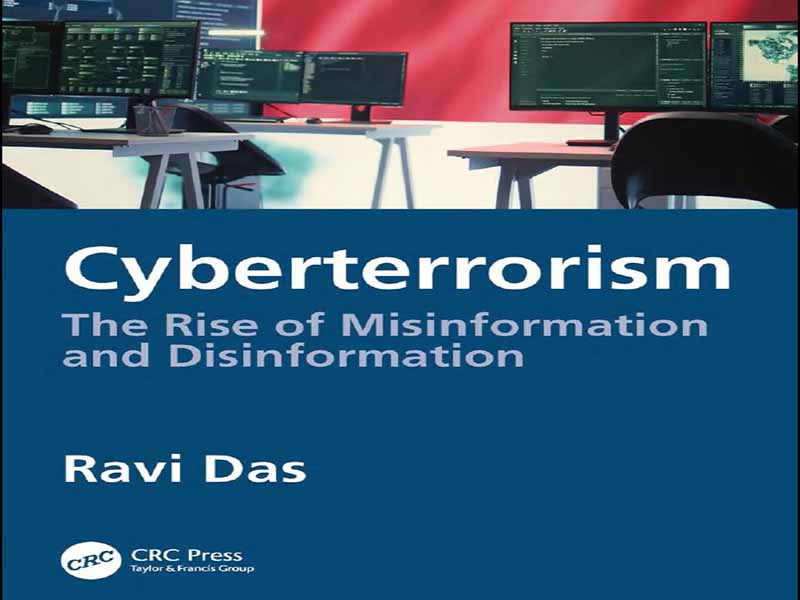- عنوان کتاب: Cyberterrorism -The Rise of Misinformation and Disinformation
- نویسنده: Ravi Das
- حوزه: تروریسم سایبری
- سال انتشار: 2026
- تعداد صفحه: 109
- زبان اصلی: انگلیسی
- نوع فایل: pdf
- حجم فایل: 1.18 مگابایت
زمانی در دنیا بود که میتوانستیم به اطلاعات و دادههایی که دریافت میکردیم، چه در زندگی حرفهای، چه در زندگی شخصی یا صرفاً تماشای روزانهی اخبار از طریق هر رسانهای که از آن آمده بود، اعتماد کنیم. اما، این عصر معصومیت بود و در آن همه انسانها غریزهی عمیقی داشتند که هیچ سطحی از آسیب در این زمینه وارد نخواهد شد. اما، با گذشت زمان و تکامل فناوری، توانایی اعتماد واقعی به اطلاعات و دادههایی که روزانه دریافت میکنیم، به شدت کاهش یافته است.
در واقع، این امر از سال ۲۰۲۰، زمانی که ChatGPT توسط Open AI راهاندازی شد، بیشتر مشهود بوده است. با این روش، اطلاعات و دادههای نادرست و گمراهکننده را میتوان تنها در عرض چند دقیقه و تنها با ارسال چند درخواست به سیستم تولید کرد. از اینجا، پس از تولید خروجی، میتوان آن را تنها در عرض چند ثانیه در تمام پلتفرمهای اصلی رسانههای اجتماعی (به ویژه X، فیسبوک، اینستاگرام، پینترست، لینکدین و غیره) منتشر کرد. اما، بسیار مهم است که به خاطر داشته باشید که فقط رسانههای اجتماعی نیستند که میتوانند اطلاعات و دادههای گمراهکننده را منتشر کنند. حتی معتبرترین منابع خبری نیز میتوانند در دام آن بیفتند، زیرا آن را با مخاطبان خود به اشتراک میگذارند. احتمالاً بزرگترین کاتالیزور این امر، فصول سیاسی، به ویژه انتخابات ریاست جمهوری است که در ایالات متحده برگزار میشود. یکی از پرکاربردترین ابزارها برای این کار، «دیپ فیک» است.
اساساً، اینها تصاویر و ویدیوهای کپی شده از افراد واقعی هستند که بیشتر در سایتهای رسانههای اجتماعی پخش میشوند. یک نمونه عالی از این میتواند یک نامزد از هر یک از احزاب اصلی (دموکرات یا جمهوریخواه) باشد. در این حالت، یک مهاجم سایبری میتواند از مدلها و الگوریتمهای هوش مصنوعی مولد برای ایجاد یک نامزد جعلی از آن نامزد خاص استفاده کند. با این حال، تشخیص جعلی بودن آن تقریباً غیرممکن است تا زمانی که کسی آن را از نزدیک بررسی کند.
از اینجا، مهاجم سایبری میتواند یک ویدیوی دیپ فیک را در یوتیوب منتشر کند و درخواست کمک مالی به کمپین خود کند. اما مطمئناً، هر پولی که ارسال میشود، به سادگی به یک حساب خارجی ارسال میشود و در نهایت بازیابی آن تقریباً غیرممکن میشود. دیپ فیک و هوش مصنوعی مولد با جزئیات بیشتر در فصل ۲ پوشش داده خواهند شد. بسیار مهم است که به خاطر داشته باشید که اکنون اصطلاحات بسیار متمایزی برای اطلاعات و دادههای گمراهکننده پدیدار شدهاند. آنها از نظر فنی به عنوان “اطلاعات نادرست” و “اطلاعات نادرست” شناخته میشوند. در بخش بعدی به آنها پرداخته خواهد شد.
There was a time in the world when we could trust at face value the information and data that we received, whether it would be in our professional lives, personal lives, or just day-to-day watching of keeping up with the news headlines through whichever medium it may have come from. But, this was an age of innocence, and where all humans had the deep instinct that no level of harm would come in this regard. But, as technology has evolved over time, the ability to actually trust the information and data that we are receiving on a daily basis has declined greatly.
In fact, this has been most pronounced ever since 2020, when ChatGPT was launched by Open AI. With this, false and misleading information and data can be produced in just a matter of minutes, by merely submitting a few queries into the system. From here, once the output has been generated, it can be posted on all of the major social media platforms (most notably those of X, Facebook, Instagram, Pinterest, LinkedIn, etc.) in just a matter of seconds.
But, it is very important to keep in mind that is not just social media where misleading information and data can be posted. Even the most reputed of news sources can also fall prey to it as well, as share that with their respective audiences. Probably the biggest catalysts of this all are the political seasons, especially the presidential elections that take place here in the United States. One of the most widely used vehicles for this is known as “Deepfakes”.
Essentially, these are replicated images and videos of real people that are spread mostly on social media sites. A perfect example of this would be a nominee from either one of the major parties (Democrat or Republican). In this case, a Cyberattacker could use the models and algorithms of Generative AI to create an impostor of that particular nominee. However, it would be nearly impossible to tell that it is actually fake until one were to take a very close look at it.
From here, the Cyberattacker can then post a Deepfake video on YouTube, asking for financial donations to be made to his or her campaign. But of course, any money sent would be simply sent to an offshore account, making it almost impossible to recover in the end. Deepfakes and Generative AI will be covered in more detail in Chapter 2. It is very important to keep in mind that very distinct terms have now emerged for the misleading information and data. They are known technically as “Misinformation” and “Disinformation”. They will be reviewed in the next section.
این کتاب را میتوانید از لینک زیر بصورت رایگان دانلود کنید:
Download: Cyberterrorism



































نظرات کاربران